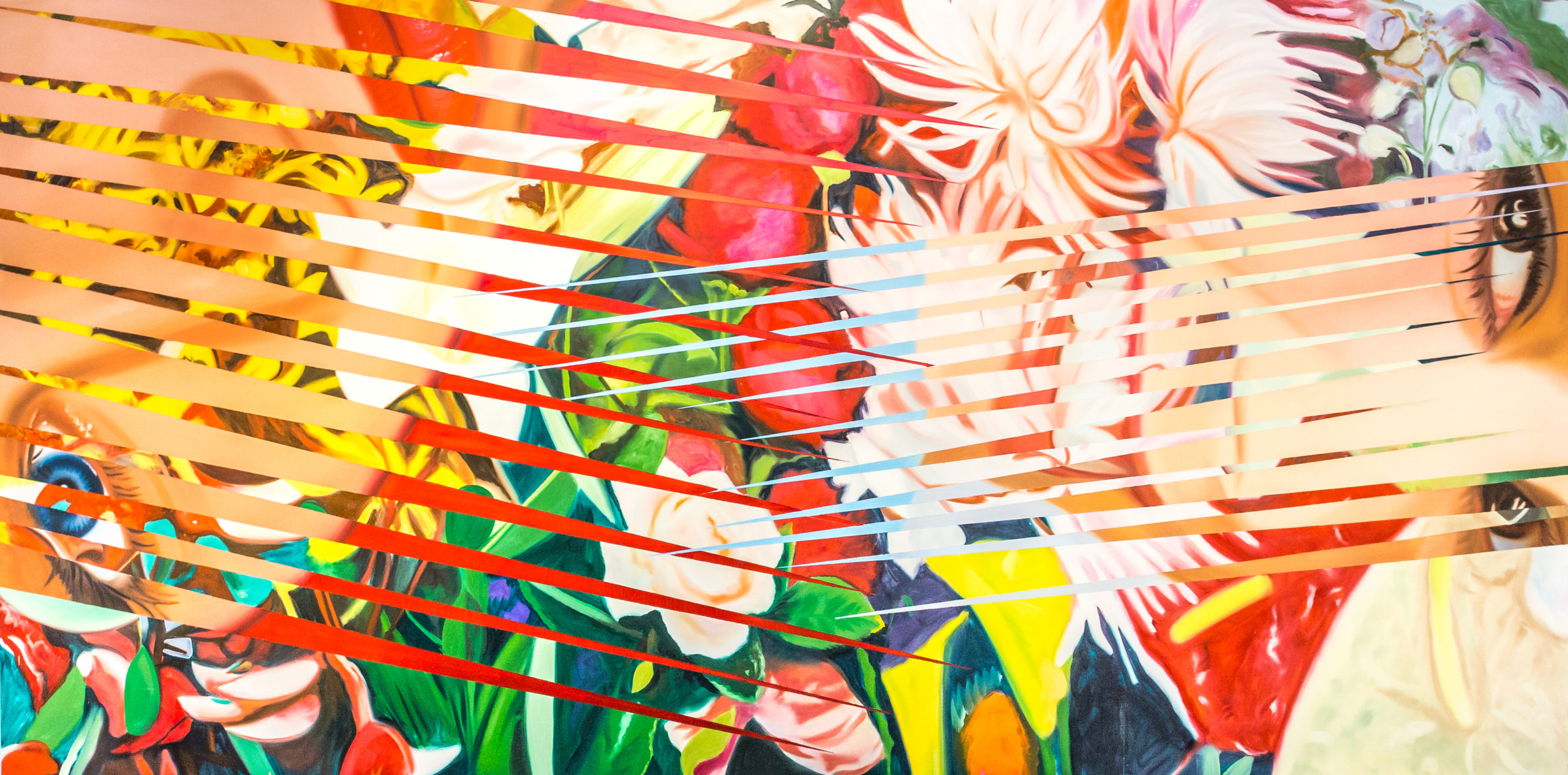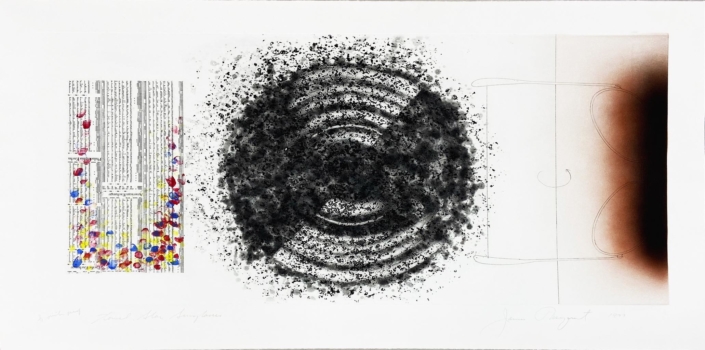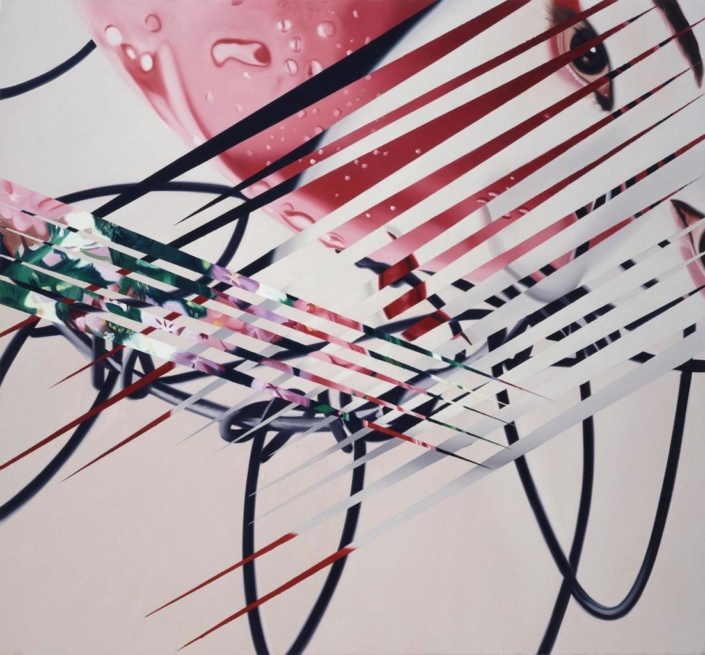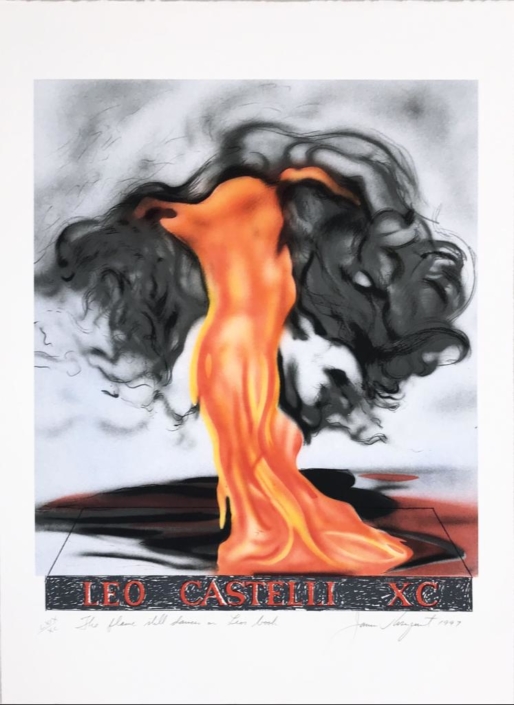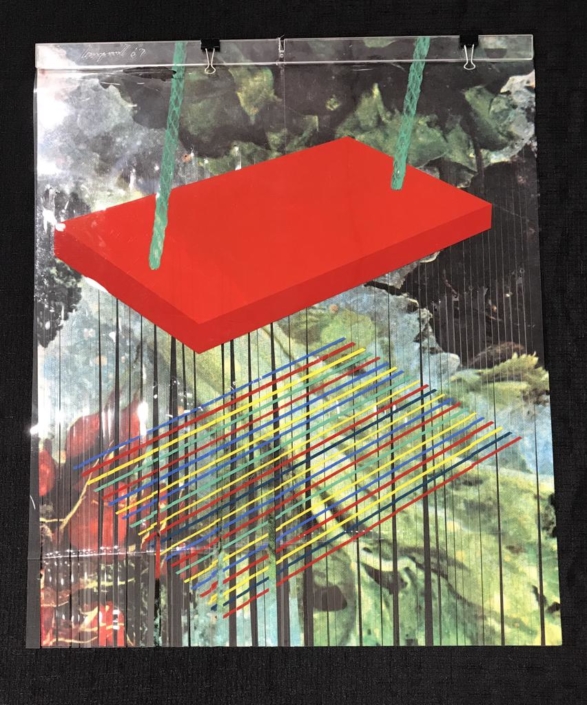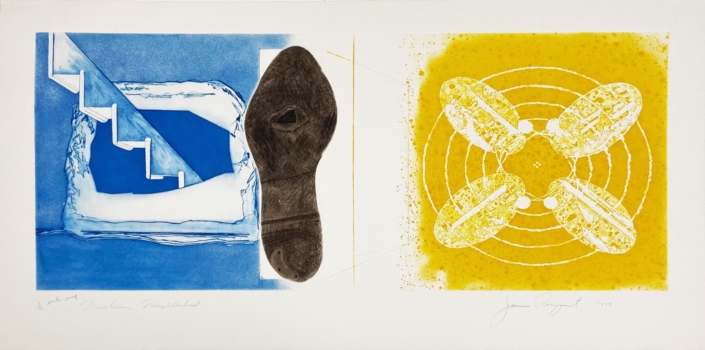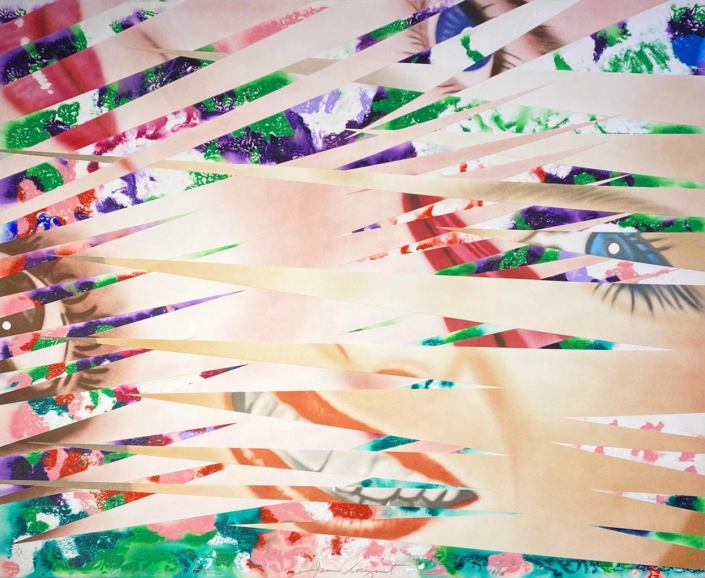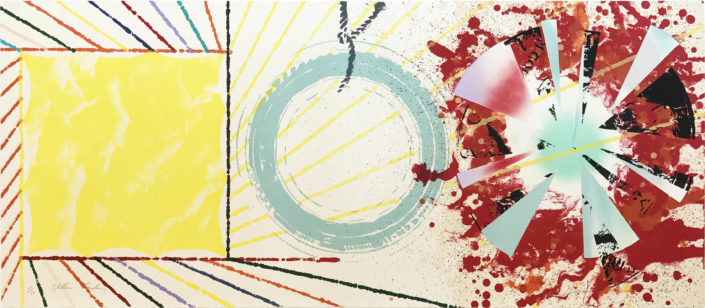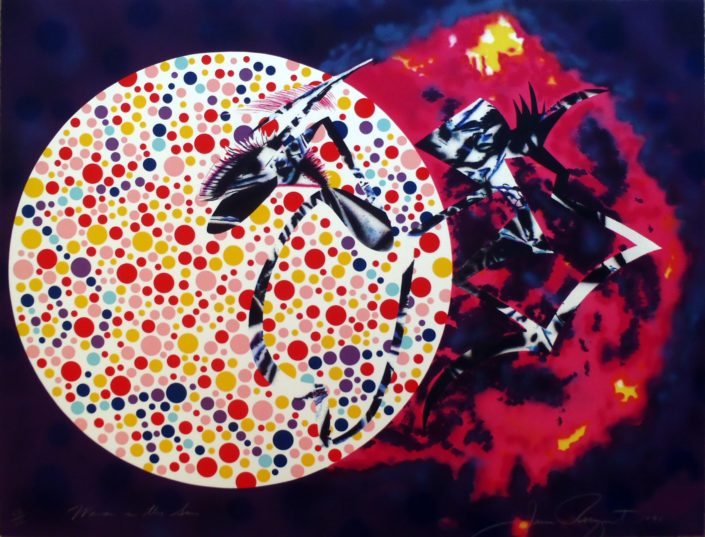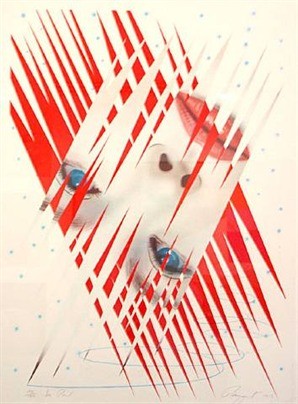AMERICAN, b. 1933
James Rosenquist, one of the seminal figures of the Pop art movement, who took as his inspiration the subject and style of modern commercial culture. Through a complex layering of such motifs as Coca-Cola bottles, kitchen appliances, packaged foods, and women’s lipsticked mouths and manicured hands, Rosenquist’s large canvases and prints embody and comment on the dizzying omnipresence of the consumer world.
In the 1960’s Rosenquist transformed the visual language of commercial painting onto his canvases, filling his large-scale pictures with fragmented advertising imagery in bright Day-Glo colors. Rosenquist’s paintings of this era, such as the iconic F-111 (1965) in the permanent collection of the Museum of Modern Art in New York, are pictorial critiques of contemporary American culture and he is considered a pioneer of the Pop Art movement along with fellow artists Robert Rauschenberg, Jasper Johns, Andy Warhol and Roy Lichtenstein. Rosenquist’s paintings since the 1970’s have retained his trademark aesthetic and focus primarily on geo-political, existential and environmental themes.
Read More
James Rosenquist
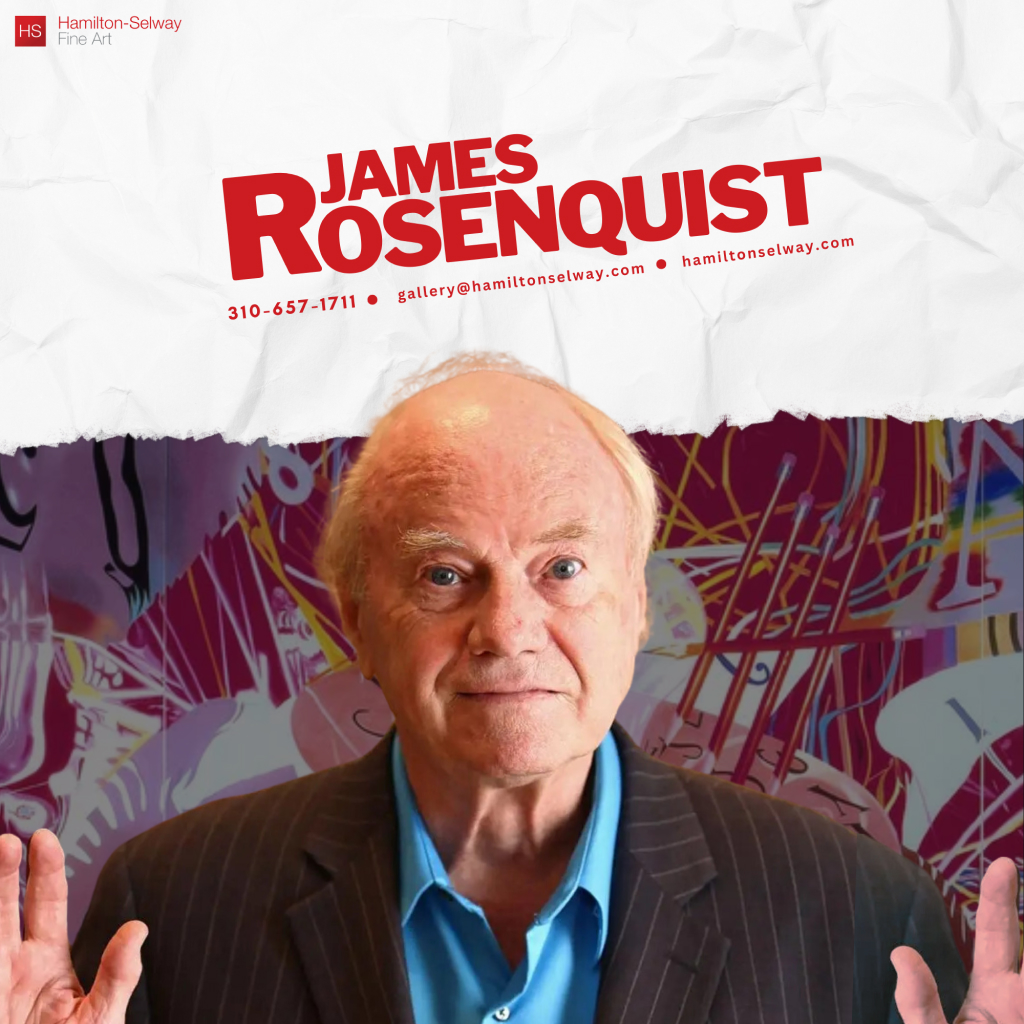
Credit: Image by inboundREM | Source
James Rosenquist Biography
1. Early Career in Commercial Art
Before gaining fame as a fine artist, Rosenquist worked as a billboard painter in New York City. This experience greatly influenced his later artistic style, characterized by large-scale compositions and commercial imagery.
2. Political Activism
Throughout his career, Rosenquist remained politically engaged and used his art as a platform for social commentary.
He addressed issues such as the Vietnam War, environmental degradation, and the excesses of capitalism in his work, challenging viewers to confront uncomfortable truths about the world around them.
3. Studio in Florida
In 1971, Rosenquist established a studio in Aripeka, Florida, where he continued to create art for the rest of his life. The serene surroundings of the Florida coast provided him with a peaceful environment in which to work and reflect on his artistic practice.
4. International Recognition
Rosenquist’s work has been exhibited in major museums and galleries around the world, including the Museum of Modern Art in New York, the Guggenheim Museum, and the Centre Pompidou in Paris. His paintings are also held in numerous public and private collections.
5. Legacy
James Rosenquist’s legacy continues to influence contemporary artists and shape the trajectory of modern art.
His innovative techniques, bold imagery, and critical perspective have left an indelible mark on the art world, ensuring that his contributions will be remembered for generations to come.
“Much of the aesthetic of my work comes from doing commercial art. I painted pieces of bread, Arrow shirts, movie stars. It was very interesting. Before I came to New York I wanted to paint the Sistine Chapel. I thought this is where the school of mural painting exists. You were painting things up close, like big chocolate cakes. In Brooklyn, I painted Schenley whiskey bottles two stories high, 147 of them over every candy store.” – James Rosenquist
James Rosenquist Artwork
Check out these 5 interesting facts about Rosenquit’s artwork in general.
1. Size Matters
Rosenquist was renowned for his monumental paintings, often stretching over several meters in width and height. His large-scale works were meant to overwhelm viewers and challenge traditional notions of art and perception.
2. Influences of Surrealism
While often associated with Pop Art, Rosenquist’s work also reflected the influence of Surrealism.
He combined everyday objects and imagery in unexpected ways, creating dreamlike compositions that invited viewers to reconsider their relationship with consumer culture.
3. Collage Techniques
Rosenquist pioneered innovative collage techniques in his artwork, incorporating fragments of images from advertisements, magazines, and other sources into his paintings. This approach allowed him to create visually striking compositions that juxtaposed disparate elements.
4. Reflecting American Culture
Much of Rosenquist’s work reflects his fascination with American culture and its obsession with consumerism, advertising, and mass media.
His paintings often featured images of consumer products, celebrities, and political figures, offering a critique of contemporary society.
5. Experimental Techniques
In addition to painting, Rosenquist explored other artistic mediums, including printmaking, sculpture, and even film. He was known for his experimental approach to art-making, constantly pushing the boundaries of traditional techniques and materials.
“The goal in all cases [of Pop Art], was to fuse painting aesthetics with the semiotics of media-drenched contemporary reality. The naked efficiency of anti-personal artmaking defines classic Pop. It’s as if someone were inviting you to inspect the fist with which he simultaneously punches you.” – Peter Schjeldahl, The New Yorker
James Rosenquist Paintings
Here are five intriguing elements about James Rosenquist’s paintings.
1. Fragmentation and Displacement
Rosenquist’s paintings often feature fragmented imagery, where elements appear disjointed or displaced from their original context.
This fragmentation challenges viewers to reassemble the visual puzzle and reconsider the relationship between the individual components within the composition.
2. Scale and Impact
One of the defining characteristics of Rosenquist’s paintings is their immense scale, which creates a sense of overwhelming presence.
By enlarging everyday objects and images to monumental proportions, he sought to disrupt the viewer’s sense of scale and perspective, immersing them in a larger-than-life visual experience.
3. Optical Illusions
Rosenquist was fascinated by the optical effects created through juxtaposition and layering of images in his paintings.
He often employed techniques such as trompe-l’oeil (fool the eye) to create illusions of depth and space, blurring the boundaries between reality and representation.
4. Reflections of Modern Life
Rosenquist’s paintings serve as reflections of the modern urban environment and its bombardment of visual stimuli.
By incorporating imagery from advertising, mass media, and consumer culture, he captured the frenetic energy and sensory overload of contemporary society, inviting viewers to contemplate their own relationship with the media-saturated world.
5. Hidden Symbolism
Beneath the surface of Rosenquist’s seemingly straightforward imagery lies a deeper layer of symbolism and meaning.
Through his choice of subjects and compositions, he often conveyed subtle messages and critiques about politics, consumerism, and the human condition, encouraging viewers to look beyond the surface and engage with the deeper themes embedded in his work.
“During the course of his career, Mr. Rosenquist experimented with sculptural assemblage and environmental installations, and he sometimes attached three-dimensional objects to his pictures. But he remained mainly a representational painter. In later years, some of his paintings approached a kind of futuristic, kaleidoscopic abstraction, but the play with different sorts of images and illusions persisted.” – Ken Johnson, New York Times
James Rosenquist Pop Art
Check out these five bite-sized, need-to-know facts about James Rosenquist’s contributions to Pop Art.
1. Blurring High and Low Culture
Like other Pop artists, Rosenquist blurred the boundaries between high and low culture by incorporating imagery from popular mass media and consumer culture into his artwork.
By elevating everyday objects and advertisements to the realm of fine art, he challenged traditional notions of artistic subject matter and aesthetic value.
2. Celebrity Culture
Rosenquist frequently depicted images of celebrities and public figures in his Pop Art compositions. From political leaders to Hollywood icons, he used recognizable faces to explore themes of fame, celebrity, and the cult of personality in contemporary society.
3. Consumerism Critique
Much of Rosenquist’s Pop Art serves as a critique of consumerism and the excesses of postwar American society.
By appropriating images from advertisements and consumer products, he highlighted the pervasive influence of commercialism on everyday life, prompting viewers to question the values and priorities of consumer culture.
4. Mass Media Influence
Rosenquist was deeply influenced by the rise of mass media and its impact on visual culture. He saw advertising, television, and print media as powerful forces shaping public perception and behavior, and he sought to reflect and critique these influences in his Pop Art paintings.
5. Collaboration with Other Pop Artists
Throughout his career, Rosenquist collaborated with other prominent Pop artists, including Andy Warhol and Roy Lichtenstein.
These collaborations often involved shared themes, techniques, and artistic sensibilities, contributing to the development and popularization of the Pop Art movement as a whole.
“Pop Art. I’ve never cared for the term, but after half a century of being described as a Pop artist, I’m resigned to it. Still, I don’t know what Pop Art means to tell you the truth.” – James Rosenquist
James Rosenquist Art
Inquire about our collections of lithographs, etchings, silkscreen prints, and several other kinds of Rosenquist art pieces.
Read Less

